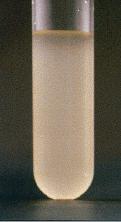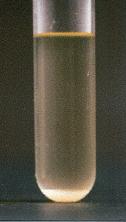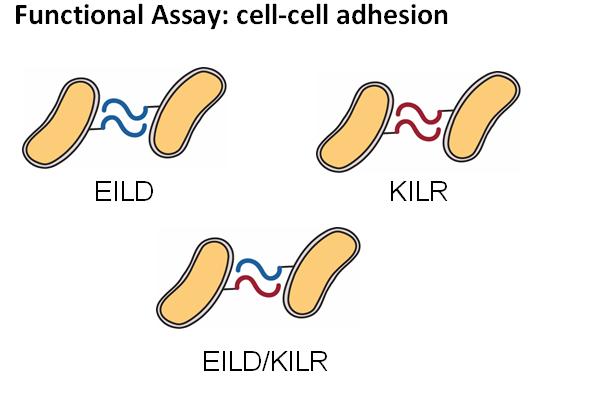Team:Berkeley Wetlab/Passenger: Leucine Zippers
From 2009.igem.org
(→assay cell clumping) |
|||
| Line 28: | Line 28: | ||
Example from the literature<br> | Example from the literature<br> | ||
[[Image:iGem2009Berkeley_Cloudy.jpg |100px]]<br> | [[Image:iGem2009Berkeley_Cloudy.jpg |100px]]<br> | ||
| - | Normal cultures | + | Normal cultures grown to saturation are cloudy.<br> |
[[Image:iGem2009Berkeley_Clear.jpg |100px]]<br> | [[Image:iGem2009Berkeley_Clear.jpg |100px]]<br> | ||
| - | Clumping causes the cells to be pulled out of solution leaving a clear supernatant.<br> | + | Clumping causes the cells to be pulled out of solution, leaving a clear supernatant.<br> |
==Results== | ==Results== | ||
===Data=== | ===Data=== | ||
===Conclusions=== | ===Conclusions=== | ||
Revision as of 04:58, 21 October 2009
Contents |
Leucine Zippers
One potential use of cell surface display is to adhere cells together selectively such that there is structure. However, such a feat is impossible to do in one step. In order to work up to such a goal, the first step of such an endeavor is create a basic system of adhere 2 cells types together. We propse using dimeric leucine zippers to adhere cells to one another. Leucine zippers are short peptides which form alpha helices that compliment each other. Using a GNC4 leucine zipper heterodimers KILR and EILD, we hoped to adhere cells to one another.
Functional Assay: Cell-Cell Adhesion
This assay tests for the functionality of displayed leucine zippers via the leucine zipper's ability to dimerized and, as a result, pull the cells out of solution into a clump.
Constructs:
EILD, leucine zipper (14)
KILR, leucine zipper (14)
EILD + KILR (14) (EILD can heterodimerize with KILR)
1363 negative control (1) (Periplasm targeted strepavidin binding protein)
CPG L2 positive control(1) (Leucine zipper previously shown to cause cell-cell adhesion
All experiments are done in triplicate
cell growth and induction
1. Grow a cells of each typein a liquid culture overnight to saturation.
2. Make a 1:1000 dilution the following day of the saturated cultures and innoculate with arabinose (100 μg/mL final concentration) and incubate for 24-48 hours. For the the EILD + KILR sample add both EILD and KILR to grow both cell types in the same tube. Grow in a 24 well v-bottom block , 3 ml of media in each well.
assay cell clumping
After induction for 24-48 hours, there should be some cell-cell clumping. The supernatant of the wells with clumping should be clear.
1. Pipette up and down 10 times with a 1000 ul pipette for all samples to get cells that settled back into suspension.
2. Take 200 ul of supernatant from the top left corner of each well and put that into a 96 well plate.
3. Take an OD 600. Wells with clumped cells should have significantly higher ODs.
Example from the literature

Normal cultures grown to saturation are cloudy.

Clumping causes the cells to be pulled out of solution, leaving a clear supernatant.
 "
"







